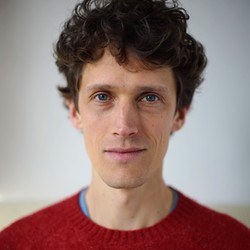I applied for the Royal Society University Research Fellowship scheme last summer. I wasn’t successful (Boo). As part of the application, I wrote a lay-person summary of my research project, limited to 3500 characters.
There wasn’t much guidance as to who or what it was for, so I wrote it for a typical imagined audience of A-level students. I had quite a lot of fun writing it (certainly more fun that trying to get the costings to add up…), so I thought I may as well publish it here to avoid it festering in some dark corner of my hard drive.
Lay Report — Computational Design of Optoelectric Materials
Building the future will require new materials, materials that are lighter and better, cheaper and with less environmental impact. Most materials we use now were discovered and improved by long experiment, not designed. My research is in designing the materials of the future.
Photovoltaics are one particular type of material I work on. These are a beautifully simple engine for converting sunlight (photons) into electricity (volts). Sunlight is the only renewable energy source that is large enough to replace all of humanity’s requirements, and is available to everyone. Designing Photovoltaics is particularly difficult as the material must be both optically and electrically active.
Currently most photovoltaics are made out of silicon. This material is abundant (sand is mainly silicon dioxide), but the manufacturing process of turning it into a solar cell is expensive (with high temperatures and vacuum processing in special clean rooms) and environmentally costly (it requires a lot of strong chemicals to purify and treat the silicon). My work looks to design better and cheaper photovoltaic materials, by solving equations with a computer.
Everything that we see and touch and feel and hear is due to the structure of
the electrons in the matter around us.
It is this electronic structure that makes the material strong or weak,
transparent or opaque, insulate or conduct electricity.
The electrons in a material are very lightweight so they move quickly,
this means that they display very quantum mechanical behaviour.
The equations that describe this electronic structure, were discovered in the
1930s and are simple to write down.
Unfortunately we cannot solve these equations exactly.
Instead we use super computers to build an approximate solution for a small model system.
The main problem when solving these equations is that every single electron in
the system interacts with every other one.
Solving these equations is like trying to choose a restaurant with a large
crowd of people.
The more people the more difficult to consider everyone’s individual
preferences, and you end up somewhere that’s a bad choice for everyone.
When we build these computer models correctly, we can start with an arrangement of atoms that doesn’t exist (yet), and predict its properties, all within the computer. This is much cheaper and faster than making the material. Validating these computer models against reality and understanding the limits of the techniques available, is essential to be able to make genuine predictions. For this reason though I work entirely on a computer, I talk everyday with experimentalists who make new materials and then measure their properties. By comparing our measurements and calculations we can really begin to understand how these new materials work, and this understanding can help us to design better materials. Theory and calculation enables us to design materials with specific properties, so we no longer have to just hope to discover materials with these properties by accident. Working together, theory and calculation can suggest the direction for the next step into the unknown, while experiment keeps the theory grounded in reality.
Materials design will enable humanity to face the challenges of building the future.
